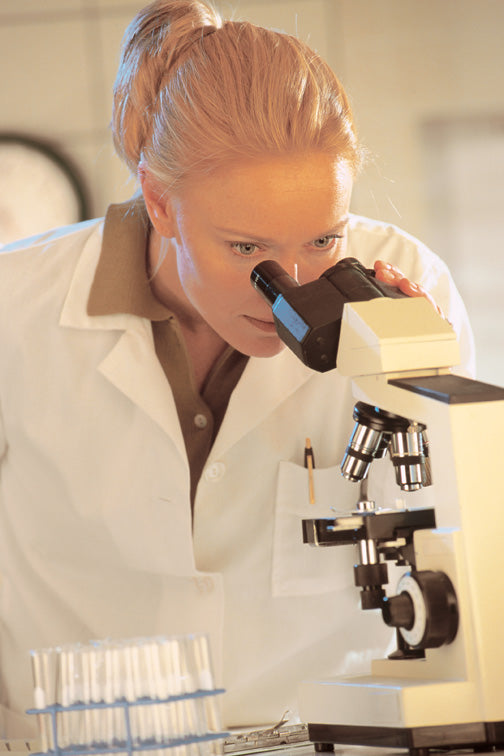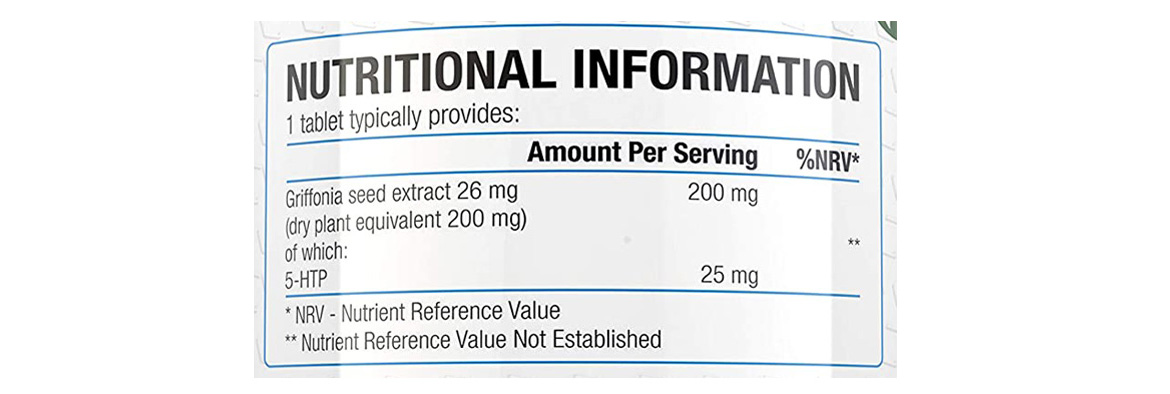EXTRACTS Are Often Mis-Labeled & Misunderstood
November 2, 2021 – Steve Bruner

There is a clear lack of understanding surrounding extraction ratios when it comes to botanical supplement extracts. For example if you see a 10:1 extract on a label, it means 10 parts were used to create 1 part but it does not mean a 10:1 extract is better than say a 1:1 Extract - it only references the amount of raw material used to make the extract not the potency.
We see company after company selling polygonum cuspidatum as a 98% extract. They say this means their supplement has 98% of the amount as trans-resveratrol, the active ingredient in naturally occurring resveratrol. Actually the extraction process of 98% polygonum cuspidatum does not produce any trans resveratrol at all but acetyl reseveratrol. There's one lab in the world that does this right and if you're not paying over $300 per bottle for almost pure acetyl resveratrol you are being fooled. If you are taking any other polygonum cuspidatum resveratrol products it is at best 30-50% with emodium and traces of methyl alcohol - and from questionable Chinese factories. Don't take it.
What the previous example of polygonum cuspidatum resveratrol tells us is some companies lie - and increasingly there are marketing companies selling Chinese ingredients who do not know the difference - they might be ignorant but that is not an excuse when it comes to things you put in your body!
This often results in misleading label claims on many supplements, which in turn ends up confusing customers. We dive into what all of this actually means for you.
What is an Extract?
An extraction is performed on raw plant material to isolate compounds of interest and to provide those active compounds in measurable, scientifically validated amounts.
When plant material goes through extraction, the active compounds are isolated from the raw material by using a solvent such as water or alcohol, and this is often facilitated by heating to improve the efficiency of the extraction.
The solvents used depend on the solubility of the active compounds in the plant material being extracted. Some actives will be water soluble, while others will only be soluble in solvents such as alcohol or dimethyl sulfoxide (DMSO).
As some plants contain a variety of active compounds, these will undergo extraction using two solvents (typically water and alcohol) to isolate as many active compounds as possible. This is referred to as dual extraction.
Extracts will always state the standardization, which refers to the amount of actives present in the extract.
Without extraction, our bodies are not able to break down and use many of these active compounds because of the solvents and heat required to break them down. So in order to achieve the maximum possible benefits from natural supplements, we rely on extracts rather than the raw plant material.
What is an Extraction Ratio?
An extraction ratio refers to the amount of raw plant material used in the extraction process. Higher extraction ratios are used to isolate higher concentrations of active compounds that may naturally be present on low amounts in the raw material.
This is represented by a X:Y ratio, where X refers to the amount of raw material used during extraction and Y refers to the final extract. However, we need to make this clear:
An X:1 extract is not X times more potent than a 1:1 extract, nor is it equivalent to X amount of the raw material used to produce the extract.
A 10:1 extract does not mean it is ten times as concentrated as a 1:1 extract, and, it does not mean that a 10:1 extract is equivalent to ten times that of the dry plant material it was extracted from.
These ratios are very commonly either misunderstood or intentionally presented to be misleading. Whenever you see a ingredient labelled with 'equivalent to' or 'dry herb equivalent', the vendors are providing you with information that only serves to mislead you because this isn't actually important.
One such example is to claim that 1000mg of a 10:1 extract is the "dry herb equivalent" of 10 grams of the raw material (1000mg x 10).
Here is why we consider this to be incorrect and misleading.
In this example, 10 refers to the amount of raw material used to produce 1 part of extract. In other words, if you have 1 kilogram of a 10:1 extract, 10 kilograms of raw material would have been processed to produce 1 kilogram of the extract.
However, this does not mean is that the extract is:
- Ten times more potent or active than the original raw material
- Equivalent to ten times the raw material, or the 'dry herb equivalent'
To begin with, a 10:1 extract is not ten times more potent than a 1:1 extract because we do not measure the potency of an extract by the extraction ratio. The potency of an extract is determined by the percentage of active compounds present, or the standardization.
The ratio of material used in an extraction cannot actually be proven one way or another. Similarly, if we were employing a more efficient extraction method, we may be able to create a very concentrated extract using a 2:1 ratio of raw material, whereas a less efficient method may require a ratio of 10:1 to achieve the same standardization of active compounds.
While higher extraction ratios are used to achieve a higher potency of extracts, there is no direct correlation between the ratio employed and the amount of actives in an extract.
Lets compare two extracts to further illustrate this point:
- 1000mg of a 1:1 mushroom extract containing 25% Beta-Glucans
- 1000mg of a 10:1 mushroom extract containing 25% Beta-Glucans
In this example, the active compounds that these two extracts have been standardized to are called Beta-Glucans, and both of them contain the same concentration of 25%. A 1000mg serving of either of these extracts would provide 250mg of Beta-Glucans, and the extraction ratio does not change that.
If the 10:1 extract was in fact 10 times more potent than the 1:1 extract as many will try to claim, that would suggest that you would only need 10% of the 10:1 extract to achieve the same amount of active compounds as found in the 1:1 extract.
If this was the case, the 10:1 extract would have to contain 250% Beta-Glucans, or 10 times the amount of active compounds that the 1:1 extract contains. This would defy physics, because as we all know you cannot have 1000mg of any extract provide 2500mg of an active compound. It is entirely illogical.
Similarly, if the 10:1 extract was ten times the dry herb equivalent, that would mean taking 10 grams of a non-extracted mushroom would produce the same effects. This is also false, since the point of an extract is to isolate and standardize the active compounds that would otherwise not be broken down and bioavailable in a dry herb.
Dry herbs are not standardized, they are simply dried and powdered raw material that has not undergone extraction. Many vendors will mistake the ratio as meaning X times more concentrated, and many times they will actually reduce the dosage by the ratio of extraction!
This fundamental lack of understanding of extraction ratios is a significant reason why many ingredients end up being severely under-dosed. Malicious or misinformed, the outcome is still the same in these situations - consumers getting shafted.
Can you Over-Extract Raw Plant Material?
Yes! There are limits to the levels of extraction and these depend on the type of raw material that we are working with.
When it comes to certain mushroom extracts for instance, the stability and usability of a finished extract is very much dependent on the extraction ratio. For instance, Lion's Mane Mushroom extracts are not stable in powder form past an extraction ratio of 8:1. They end up being an unusable paste.
Lion's Mane extracts produced in ratios higher than 8:1, such as 10:1, 12:1 or 20:1, will always necessarily include a filler in order to keep the material stable in powder form. These fillers are almost always starches that pad out the extract, and artificially inflate the percentage of polysaccharides, reducing the concentration of the beneficial Beta-Glucan compounds.
Current extraction methods are able to achieve about 30% Beta-Glucan concentrations from Lion's Mane mushrooms if you are using a hot-water 1:1 extraction process. However, if you are dual-extracting Lion's Mane, the secondary alcoholic extraction will reduce the percentage of Beta-Glucans due to loss from solvent evaporation. Dual extracted Lion's Mane mushroom will typically contain 15-20% Beta-Glucans.
Back on topic, since a 20:1 extract would not be stable as a powder, polysaccharides in the form of rice or oats are added to the finished product in order to keep it in powder form. This is why these high ratio Lion's Mane mushroom extracts will claim to have 50% or more polysaccharides. What this actually means is that a significant amount of these polysaccharides are in fact inactive alpha-glucans, which unlike Beta-Glucans, provide no benefits whatsoever.
Don't be mislead by high extraction ratios when it comes to plant extracts. It is not possible to 'reverse engineer' an extract to determine how much raw material was used to produce the extract, and that means that extraction ratios cannot be verified like the percentages of an active compound can be.
Many vendors will claim to have the most potent extracts using nothing but the extraction ratio as the basis for their claims. But as you now know, these kinds of statements are totally misleading.
An Example of Misleading Labeling
Here we have a 5-HTP product. 5-HTP is the active compound extracted from griffonia seeds. The typical standardization for this extract is over 98% 5-HTP content.

While this product clearly implies that it provides 200mg of 5-HTP, the manufacturers have in fact included 26mg of griffonia seed extract while using a misleading 'dry plant equivalent' value of 200mg.
How did they reach this figure? The extraction ratio for griffonia seed extract is 8:1, so they have multiplied the dosage (26mg) by this ratio and used the dry plant equivalent as the dosage instead.
The actual amount of 5-HTP in this supplement is 25mg per capsule. Most people consuming this supplement will be under the impression they are getting 200mg of 5-HTP per capsule, when in fact they are getting just 1/8 of the claimed amount.
This misleading approach uses the false equivalence of employing the extraction ratio as the basis for the claimed dose. It is completely inaccurate and just one example of how many supplements do not contain what they claim to.
Focus on the Standardization of Active Compounds, Not Extraction Ratios
Instead of worrying about extraction ratios, pay attention to the standardization of active compounds instead. The standardization refers to what amount of active compounds are present in a particular extract. This is always displayed as a percentage or measured weight.
Using this approach, you are much more likely to get what you pay for when shopping for the best natural supplement extracts.
In Summary:
- Don't be mislead with statements such as 'dry herb equivalent' or 'equivalent to'.
- Extract ratios have no correlation with the standardization of the extract.
- Higher extract ratios do not equate to a better product. Optimal levels of extraction vary for every type of plant material.
- Extract ratios cannot be proven or verified in a lab.
- The percentage of active compounds is always the most important factor to consider in an extract.
